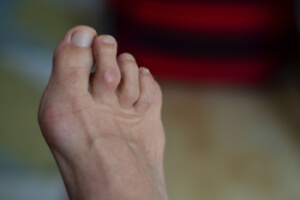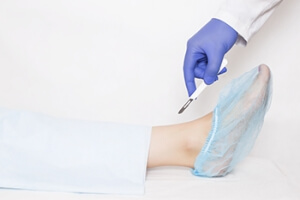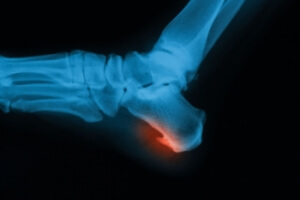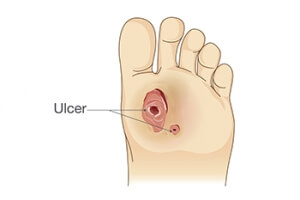Connect With Us
Blog

Foot Injuries From Rock Climbing

Rock climbing, an exhilarating sport enjoyed by many, can also pose risks of foot injuries, both acute and chronic. Acute injuries often occur due to sudden trauma or overuse during climbs. Common acute foot injuries include sprains, strains, fractures, and abrasions, often resulting from slips, falls, or improper foot placements. Climbing shoes, designed for precision and grip, can exacerbate foot issues if they fit too tightly or lack proper support. Wearing ill-fitting shoes may lead to blisters, corns, or ingrown toenails, while prolonged use can contribute to conditions like plantar fasciitis or tendonitis. If you participate in rock climbing and have sustained a foot injury, it is suggested that you schedule an appointment with a podiatrist for diagnosis and treatment. These healthcare professionals can also provide guidance on proper shoe fit, and recommend supportive inserts, and custom-made orthotics.
Sports related foot and ankle injuries require proper treatment before players can go back to their regular routines. For more information, contact Elie C. Daniel, DPM of Illinois. Our doctor can provide the care you need to keep you pain-free and on your feet.
Sports Related Foot and Ankle Injuries
Foot and ankle injuries are a common occurrence when it comes to athletes of any sport. While many athletes dismiss the initial aches and pains, the truth is that ignoring potential foot and ankle injuries can lead to serious problems. As athletes continue to place pressure and strain the area further, a mild injury can turn into something as serious as a rupture and may lead to a permanent disability. There are many factors that contribute to sports related foot and ankle injuries, which include failure to warm up properly, not providing support or wearing bad footwear. Common injuries and conditions athletes face, including:
- Plantar Fasciitis
- Plantar Fasciosis
- Achilles Tendinitis
- Achilles Tendon Rupture
- Ankle Sprains
Sports related injuries are commonly treated using the RICE method. This includes rest, applying ice to the injured area, compression and elevating the ankle. More serious sprains and injuries may require surgery, which could include arthroscopic and reconstructive surgery. Rehabilitation and therapy may also be required in order to get any recovering athlete to become fully functional again. Any unusual aches and pains an athlete sustains must be evaluated by a licensed, reputable medical professional.
If you have any questions please feel free to contact our offices located in Princeton, Peru, and Mendota, IL . We offer the newest diagnostic and treatment technologies for all your foot and ankle needs.
Sports Related Foot And Ankle Injuries
Foot and ankle injuries are common among people who participate in sports. Several factors contribute to this. They include failing to stretch or warm up properly, not wearing the proper type of shoe and not taping or providing other types of support for the ankle or foot. The most common foot and ankle injuries suffered by people involved in sports are plantar fasciitis, ankle sprains and Achilles tendon damage or ruptures. If not treated properly, they can lead to permanent disability.
Treating these injuries is relatively simple if they are identified and addressed early. Many athletes dismiss the initial aches and pains associated with injury as just soreness or tired muscles. Their first response is usually to try to work through it. This can lead to serious problems. Many minor injuries are made far more serious when athletes continue to put strain and pressure on them. That attitude can change a mild strain into a serious strain and a minor tear into a rupture. Athletes should have unusual aches and pains evaluated by a skilled medical professional.
Plantar fasciitis is a painful injury. It is inflammation of the plantar fascia, the thick band of tissue running from the heel to the base of the toes. If left untreated, it can lead to a degenerative disease called plantar fasciosis. There are several effective treatments for this ailment. Doctors often prescribe rest, massages, stretching, night splints, physical therapy, anti-inflammatory medication, corticosteroids or surgery, usually in that order. The most effective treatment for plantar fasciitis is orthotics, which offers foot support. Surgery is occasionally used as a last resort, but it comes with the risk of nerve damage and infection and often does not stop the pain.
The Achilles tendon is the largest tendon in the body. It connects the calf muscles to the heel bone. Running, jumping and walking all impact this tendon. Two common injuries to the Achilles tendon are tendonitis and a rupture of the tendon. Tendonitis is inflammation in the tendon often caused by an increase in the amount of stress placed on it. Non-surgical treatments include rest, ice or anti-inflammatory medication. A rupture (tear) of the Achilles tendon can be treated by placing the lower leg in a cast for several weeks or with surgery. Many physicians feel surgery is the better option because it lowers the risk of re-ruptures. Both methods require 4 to 6 months of rehabilitation.
Ankle sprains are the most common sports related foot and ankle injury. A sprain occurs when the ligament holding the ankle bones and joint stretches beyond its normal range. It can be treated non-surgically with a combination of rest, ice wrapped around the joint for 30 minutes immediately after injury, compression by a bandage and elevating the ankle above the heart for 48 hours. This combination is referred to as RICE. Severe ankle sprains in which the ligaments are torn may require reconstructive surgery followed by rehabilitation.
Types of Hammertoe Treatments
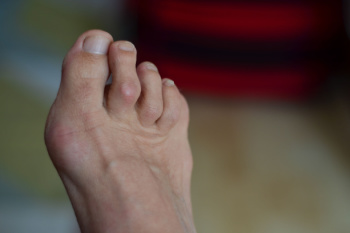 Treatment for hammertoe, a condition where the toe bends abnormally, varies depending on the severity of the condition. Treatment can range from non-invasive approaches to surgical intervention. Initially, a podiatrist may recommend conservative methods, such as wearing roomier, more comfortable shoes to accommodate the deformity and using custom orthotic devices to relieve pain. Stretching exercises may also be recommended to strengthen toe muscles and improve flexibility. For more persistent cases, where the toe becomes rigid or pain is severe, surgical options may be considered. Surgery aims to straighten the toe, and this may involve removing a portion of the bone or realigning the tendons and ligaments. Post-surgery, patients often go through some rehabilitation to restore function and mobility. Consulting with a podiatrist about hammertoe is suggested to determine the most appropriate treatment plan for your specific needs.
Treatment for hammertoe, a condition where the toe bends abnormally, varies depending on the severity of the condition. Treatment can range from non-invasive approaches to surgical intervention. Initially, a podiatrist may recommend conservative methods, such as wearing roomier, more comfortable shoes to accommodate the deformity and using custom orthotic devices to relieve pain. Stretching exercises may also be recommended to strengthen toe muscles and improve flexibility. For more persistent cases, where the toe becomes rigid or pain is severe, surgical options may be considered. Surgery aims to straighten the toe, and this may involve removing a portion of the bone or realigning the tendons and ligaments. Post-surgery, patients often go through some rehabilitation to restore function and mobility. Consulting with a podiatrist about hammertoe is suggested to determine the most appropriate treatment plan for your specific needs.
Hammertoes can be a painful condition to live with. For more information, contact Elie C. Daniel, DPM of Illinois. Our doctor will answer any of your foot- and ankle-related questions.
Hammertoe
Hammertoe is a foot deformity that occurs due to an imbalance in the muscles, tendons, or ligaments that normally hold the toe straight. It can be caused by the type of shoes you wear, your foot structure, trauma, and certain disease processes.
Symptoms
- Painful and/or difficult toe movement
- Swelling
- Joint stiffness
- Calluses/Corns
- Physical deformity
Risk Factors
- Age – The risk of hammertoe increases with age
- Sex – Women are more likely to have hammertoe compared to men
- Toe Length – You are more likely to develop hammertoe if your second toe is longer than your big toe
- Certain Diseases – Arthritis and diabetes may make you more likely to develop hammertoe
Treatment
If you have hammertoe, you should change into a more comfortable shoe that provides enough room for your toes. Exercises such as picking up marbles may strengthen and stretch your toe muscles. Nevertheless, it is important to seek assistance from a podiatrist in order to determine the severity of your hammertoe and see which treatment option will work best for you.
If you have any questions, please feel free to contact our offices located in Princeton, Peru, and Mendota, IL . We offer the newest diagnostic and treatment technologies for all your foot care needs.
Hammertoe
Hammertoe is a foot deformity that occurs due to an imbalance in the tendons, muscles, or ligaments that are responsible for holding the toes in their normal position. This condition may be caused by poor footwear, foot structure, trauma, and disease. The most common solution for hammertoe is to relieve the pain by changing your footwear and wearing orthotics. In severe cases, surgery may be required.
The shoes that are most likely to cause hammertoe are high heeled shoes or shoes that are too tight in the toe box. Tight shoes will force your toes to crowd together in a curled position. This position will likely continue when you take your shoes off. Another cause is trauma. When you stub your toe, you are increasing the chance that you will develop hammertoe.
There are risk factors that may make you more likely to develop this condition. Women are more likely to have the condition compared to men, and it is also more likely to appear in those who are older in age.
Many different foot problems can be avoided by wearing shoes that have adjustability, adequate toe room, and low heels. Furthermore, if you want to buy new shoes, you should look to purchase them at the end of the day and make sure you know your correct size. The importance of buying shoes at the end of the day is that your feet swell as the day progresses. You should also ensure that you are wearing your correct size because your shoe size may change as you grow older.
To diagnose someone with hammertoe, your podiatrist will need to conduct a thorough examination of your foot. Your doctor may even order an x-ray to evaluate the bones and joints of your feet and toes.
If you have hammertoe, your podiatrist may recommend that you wear shoes that fit you better along with inserts to place inside them. Additionally, he or she may suggest special exercises for you to perform to stretch your toes. One helpful exercise it to pick up marbles with your feet or crumple a towel with your toes.
Prior to meeting with your podiatrist, it will be helpful to make a list of all the symptoms you are experiencing. You should also make a note of medications you are taking and important personal information about your medical history.
Ankle Joint Replacement Surgery for Arthritis Relief
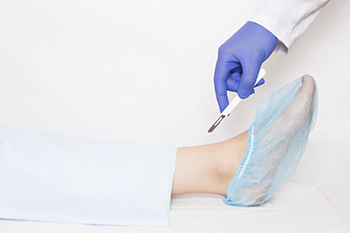 Joint replacement for ankle arthritis is a surgical option for those suffering from severe arthritis in their ankle. The point of the replacement surgery is to relieve pain and restore the function of the ankle. Arthritis is characterized by the breakdown of cartilage that cushions the ends of the bones, leading to pain, stiffness, and reduced mobility. During ankle joint replacement surgery, also known as ankle arthroplasty, the damaged parts of the ankle bones are removed and replaced with artificial components. These components mimic the natural movement of the ankle, offering patients the chance to regain mobility. This procedure is considered when less invasive treatments have failed to provide relief. It is also considered mostly for older, less active patients. Joint replacement can significantly reduce pain and improve the ankle's function, making it a valuable treatment option for those with advanced ankle arthritis. If you are suffering from arthritis in the ankle, it is suggested that you schedule an appointment with a podiatrist to discuss whether ankle replacement surgery is right for you.
Joint replacement for ankle arthritis is a surgical option for those suffering from severe arthritis in their ankle. The point of the replacement surgery is to relieve pain and restore the function of the ankle. Arthritis is characterized by the breakdown of cartilage that cushions the ends of the bones, leading to pain, stiffness, and reduced mobility. During ankle joint replacement surgery, also known as ankle arthroplasty, the damaged parts of the ankle bones are removed and replaced with artificial components. These components mimic the natural movement of the ankle, offering patients the chance to regain mobility. This procedure is considered when less invasive treatments have failed to provide relief. It is also considered mostly for older, less active patients. Joint replacement can significantly reduce pain and improve the ankle's function, making it a valuable treatment option for those with advanced ankle arthritis. If you are suffering from arthritis in the ankle, it is suggested that you schedule an appointment with a podiatrist to discuss whether ankle replacement surgery is right for you.
In certain cases, in which the patient suffers from extreme pain or damage in a joint, joint replacement surgery may be deemed useful. If you have constant pain in a foot joint, consult with Elie C. Daniel, DPM from Illinois. Our doctor will assess your condition and provide you with quality foot and ankle treatment.
What Is Joint Replacement Surgery?
Over time, joints wear down; this can be exacerbated by diseases and conditions. Joint replacement surgery, also known as arthroplasty, is when a damaged joint is surgically removed and replaced with a prosthesis. Prostheses, which can be made of ceramic, plastic, or metal, act as joints in lieu of an actual joint. One of the most prevalent causes for joint replacement is arthritis.
Arthritis in the Foot
Arthritis can occur in any joint in the body, including in the feet. Common types of arthritis in the foot are osteoarthritis, rheumatoid arthritis, and gout. The big toe is usually where arthritis occurs in the foot; this is known as hallux rigidus.
Joint Replacement Surgery in the Foot
The most common form of joint replacement in the foot is a first metatarsophalangeal (MTP) joint placement. MTP joint replacement surgery is designed to treat hallux rigidus. Surgery is not intensive, and recovery occurs within one to two months after the procedure has been done. Overall, joint replacement surgery is a safe and effective way to treat pain in the joint of the foot.
If you have any questions, please feel free to contact our offices located in Princeton, Peru, and Mendota, IL . We offer the newest diagnostic and treatment technologies for all your foot care needs.
Joint Replacement Surgery
When conservative, noninvasive treatments prove unsuccessful, podiatrists will often turn to surgery as the last line of treatment for their patients. If patients are suffering from joint pain, issues in mobility, or are seeking to correct a deformity, joint replacement surgery is an effective option. Joint replacement surgery is also successful in treating arthritis, which is the most common cause of improperly working joints.
Patients with symptoms that include joint pain, stiffness, limping, muscle weakness, limited motion, and swelling are typically considered for joint replacement surgery. Range of motion and activity post-surgery will vary between patients and depending on the specific surgery performed, the affected joint, and the damage that will need to be repaired.
Joint replacement surgery replaces the damaged cartilage and bone, the latter if required. The damaged cartilage is typically replaced with a prosthesis that is attached to the bone, allowing the implant to grow into the bone. Following surgery, the patient will typically undergo physical therapy to become familiar with movement using the replaced joint.
What Is Cuboid Syndrome and How Can It Be Treated?
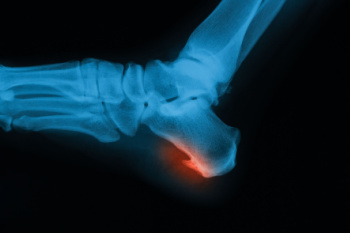
Cuboid syndrome, also known as cuboid subluxation or lateral plantar neuritis, is a condition where the cuboid bone in the outer midfoot becomes displaced. This displacement can occur due to trauma, overuse, or sudden twisting of the foot. Symptoms typically include pain and tenderness on the outer side of the foot, especially during weight-bearing activities like walking or running. Patients may also experience some difficulty moving the foot sideways. Diagnosis of cuboid syndrome involves a physical examination by a podiatrist, often including specific maneuvers to reproduce the pain and assess foot alignment. X-rays or other imaging studies may be ordered to rule out other potential causes of foot pain. Treatment is typically conservative, including rest, taping, or bracing to stabilize the foot, and exercises to strengthen the surrounding muscles. In some cases, manipulation or mobilization techniques performed by a podiatrist may be beneficial. If you have outer midfoot pain, it is suggested that you make an appointment with a podiatrist.
Cuboid syndrome, also known as cuboid subluxation, occurs when the joints and ligaments near the cuboid bone in the foot become torn. If you have cuboid syndrome, consult with Elie C. Daniel, DPM from Illinois. Our doctor will assess your condition and provide you with quality foot and ankle treatment.
Cuboid syndrome is a common cause of lateral foot pain, which is pain on the outside of the foot. The condition may happen suddenly due to an ankle sprain, or it may develop slowly overtime from repetitive tension through the bone and surrounding structures.
Causes
The most common causes of cuboid syndrome include:
- Injury – The most common cause of this ailment is an ankle sprain.
- Repetitive Strain – Tension placed through the peroneus longus muscle from repetitive activities such as jumping and running may cause excessive traction on the bone causing it to sublux.
- Altered Foot Biomechanics – Most people suffering from cuboid subluxation have flat feet.
Symptoms
A common symptom of cuboid syndrome is pain along the outside of the foot which can be felt in the ankle and toes. This pain may create walking difficulties and may cause those with the condition to walk with a limp.
Diagnosis
Diagnosis of cuboid syndrome is often difficult, and it is often misdiagnosed. X-rays, MRIs and CT scans often fail to properly show the cuboid subluxation. Although there isn’t a specific test used to diagnose cuboid syndrome, your podiatrist will usually check if pain is felt while pressing firmly on the cuboid bone of your foot.
Treatment
Just as the range of causes varies widely, so do treatments. Some more common treatments are ice therapy, rest, exercise, taping, and orthotics.
If you have any questions, please feel free to contact our offices located in Princeton, Peru, and Mendota, IL . We offer the newest diagnostic and treatment technologies for all your foot care needs.
Cuboid Syndrome
Cuboid syndrome mostly affects athletes, although it can affect non-athletes too. It is also known as cuboid subluxation or cuboid fault syndrome. This condition occurs when joints and ligaments near the cuboid bone of the foot are damaged, or when the cuboid bone itself is dislodged from its natural position. It is usually marked by pain on the outer side of the foot, which may be persistent or may come and go. Cuboid syndrome can be difficult to diagnose unless it becomes severe and more noticeable. Your doctor will likely ask questions about when the pain began and how long it has been present, and will put pressure on the cuboid bone to determine if that area is the origin of the pain.
Causes of Cuboid Syndrome
- Any repetitive stresses placed on the foot due to athletic activities are a common cause of cuboid syndrome.
- Although it develops over time, it is possible that this syndrome can occur all of sudden due to a single event or injury.
- Over-pronation can exacerbate the condition if not corrected.
Disagreements Amongst Podiatrists Regarding Cuboid Syndrome
- Some refer to it as the dislocation of the calcaneal-cuboid joint only.
- Other podiatrists see it as an injury of the ligaments located nearby, which also involves the cuboid bone.
It is very important that when you experience any kind of pain on the side of your foot, you should seek medical care right away. If a subluxed cuboid is caught early, your feet may respond well to the treatment, and you can get back into sports or other activities again as soon as the pain subsides.
Treating Chronic Diabetic Foot Ulcers
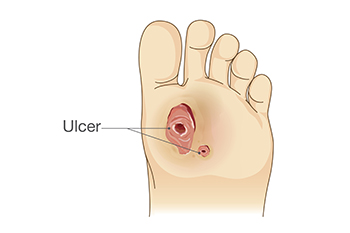 Chronic foot ulcers are a challenging complication of diabetes. Diabetic ulcers may arise from a variety of factors, including impaired blood circulation, nerve damage, and high blood sugar levels. These factors collectively compromise the body's ability to heal and fight infection. There are many therapies that podiatrists may use to combat foot ulcers, such as advanced wound care techniques, infection control measures, and strategies to enhance circulation. One key treatment is debridement, which involves the careful removal of dead or infected tissue to promote healing. A podiatrist may apply specialized dressings and topical agents that foster a moist healing environment and support tissue regeneration. Another treatment, called offloading, involves reducing pressure on the ulcer through custom footwear or casts. These are not the only treatments that podiatrists may employ. If you are suffering from chronic foot ulcers due to diabetes, it is suggested you schedule regular appointments with a podiatrist to monitor and treat the condition.
Chronic foot ulcers are a challenging complication of diabetes. Diabetic ulcers may arise from a variety of factors, including impaired blood circulation, nerve damage, and high blood sugar levels. These factors collectively compromise the body's ability to heal and fight infection. There are many therapies that podiatrists may use to combat foot ulcers, such as advanced wound care techniques, infection control measures, and strategies to enhance circulation. One key treatment is debridement, which involves the careful removal of dead or infected tissue to promote healing. A podiatrist may apply specialized dressings and topical agents that foster a moist healing environment and support tissue regeneration. Another treatment, called offloading, involves reducing pressure on the ulcer through custom footwear or casts. These are not the only treatments that podiatrists may employ. If you are suffering from chronic foot ulcers due to diabetes, it is suggested you schedule regular appointments with a podiatrist to monitor and treat the condition.
Diabetic foot care is important in preventing foot ailments such as ulcers. If you are suffering from diabetes or have any other concerns about your feet, contact Elie C. Daniel, DPM from Illinois. Our doctor can provide the care you need to keep you pain-free and on your feet.
Diabetic Foot Care
Diabetes affects millions of people every year. The condition can damage blood vessels in many parts of the body, especially the feet. Because of this, taking care of your feet is essential if you have diabetes, and having a podiatrist help monitor your foot health is highly recommended.
The Importance of Caring for Your Feet
- Routinely inspect your feet for bruises or sores.
- Wear socks that fit your feet comfortably.
- Wear comfortable shoes that provide adequate support.
Patients with diabetes should have their doctor monitor their blood levels, as blood sugar levels play such a huge role in diabetic care. Monitoring these levels on a regular basis is highly advised.
It is always best to inform your healthcare professional of any concerns you may have regarding your feet, especially for diabetic patients. Early treatment and routine foot examinations are keys to maintaining proper health, especially because severe complications can arise if proper treatment is not applied.
If you have any questions please feel free to contact our offices located in Princeton, Peru, and Mendota, IL . We offer the newest diagnostic and treatment technologies for all your foot and ankle needs.

